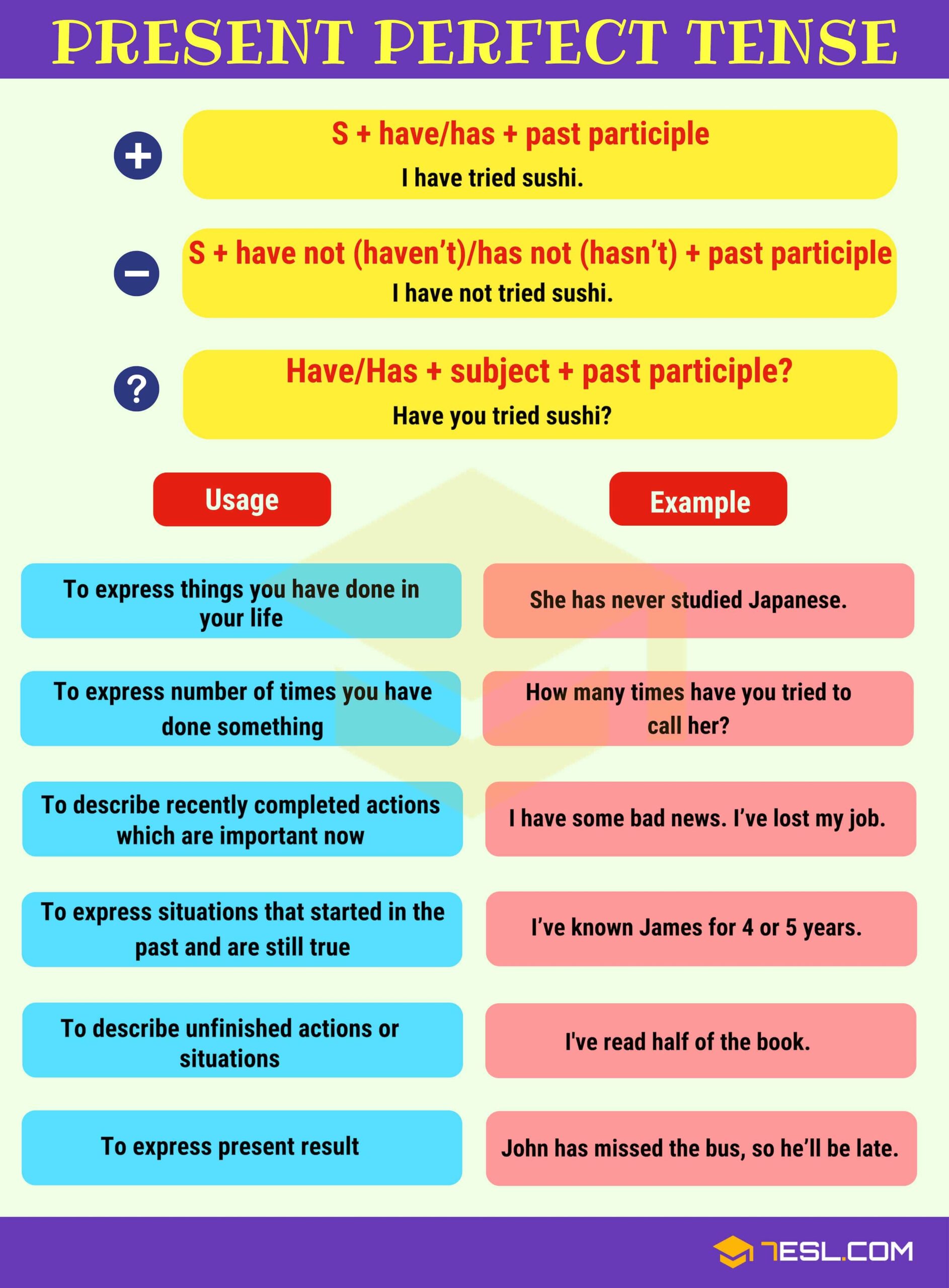The present perfect tense is a crucial aspect of English grammar that is used to indicate actions that have been completed at some point in the past but have relevance to the present moment. It is a versatile tense that can be used in various contexts to convey different meanings.
Understanding how to use the present perfect tense correctly is essential for effective communication in English. By mastering this tense, you can express yourself more clearly and accurately, making your writing and speaking more engaging and precise.
Present Perfect Tense Examples
1. She has visited Paris three times in the last year.
2. They have finished their homework already.
3. He has lived in this city for five years.
4. I have never seen such a beautiful sunset before.
5. We have just arrived at the airport.
The present perfect tense is formed by using the auxiliary verb “have” or “has” followed by the past participle of the main verb. It is commonly used to talk about experiences, changes, or actions that have a connection to the present moment. By using this tense correctly, you can convey a sense of completion and relevance to your audience.
When using the present perfect tense, it is important to consider the time frame of the action and its impact on the present. By providing context and using specific examples, you can effectively convey the intended meaning and create a more engaging narrative for your audience.
Overall, the present perfect tense is a valuable tool in English grammar that allows for precise and nuanced communication. By mastering this tense and using it effectively in your writing and speaking, you can enhance your language skills and convey your ideas more clearly and convincingly.
In conclusion, the present perfect tense is an essential aspect of English grammar that plays a crucial role in effective communication. By understanding its usage and practicing with examples, you can improve your language skills and express yourself more accurately in various contexts.
